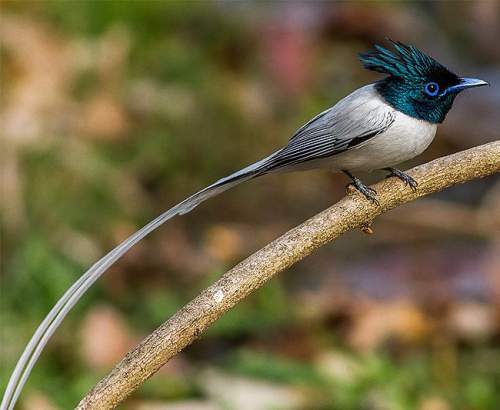
Indian Paradise-Flycatcher
Terpsiphone paradisi
Order:
Family:
Size:
19 to 22 centimeters (7.5 to 8.7 inches)
Weight:
15 to 25 grams (0.5 to 0.9 ounces)
Taxonomy:
Linnaeus in 1758
Short Description:
Indian Paradise-Flycatcher (Terpsiphone paradisi) is a strikingly beautiful bird found in Pakistan. It belongs to the monarch flycatcher family and is known for its long, flowing tail feathers and contrasting colors. The male of the species is predominantly white with elongated tail feathers, while the female is more subdued with a rufous-brown plumage. During the breeding season, males display an impressive courtship dance to attract females, making them a sight to behold in the forested regions where they reside.
Far far away, behind the word mountains, far from the countries Vokalia and Consonantia, there live the blind texts. Separated they live in Bookmarksgrove right at the coast
Indian Paradise-Flycatcher is primarily found in the northern regions, particularly in the forested areas of Khyber Pakhtunkhwa province and Azad Jammu and Kashmir. They prefer dense forests, wooded areas, and riverine habitats, where they can find ample insects for food and suitable nesting sites. While they may occasionally venture into more open habitats during migration, they are typically associated with dense foliage.
Indian Paradise-Flycatchers are primarily insectivorous, feeding on a variety of flying insects caught in mid-air using their agile flight skills. They are known for their graceful flight patterns as they swoop and dive to catch prey. During the breeding season, males establish territories and perform elaborate courtship displays to attract females. These displays often involve fluttering flights, song, and the showcasing of their impressive tail feathers. Once a pair bonds, they build a cup-shaped nest in the canopy of trees, where the female lays and incubates the eggs while the male assists in feeding the chicks after they hatch. Despite their stunning appearance, they are relatively secretive birds, preferring the cover of dense vegetation for nesting and foraging.
Far far away, behind the word mountains, far from the countries Vokalia and Consonantia, there live the blind texts. Separated they live in Bookmarksgrove right at the coast
About Photographer : Hello World
Facebook
Twitter
Instagram
Flicker
LinkedIn


